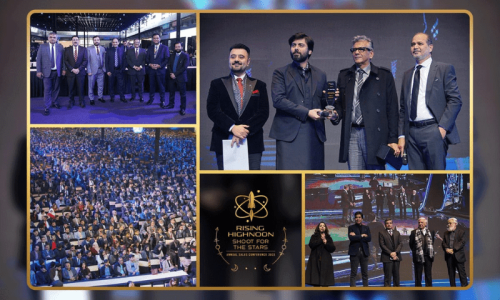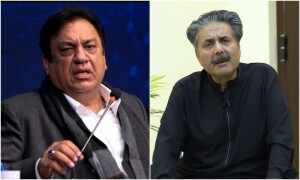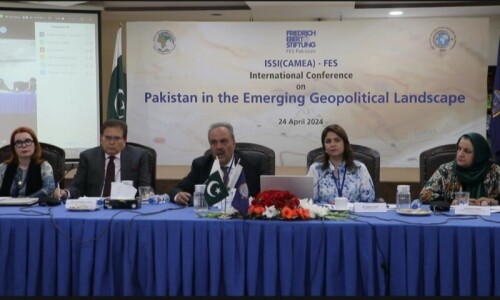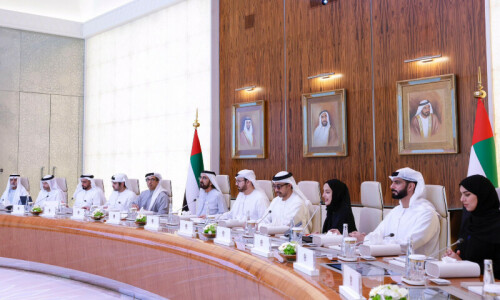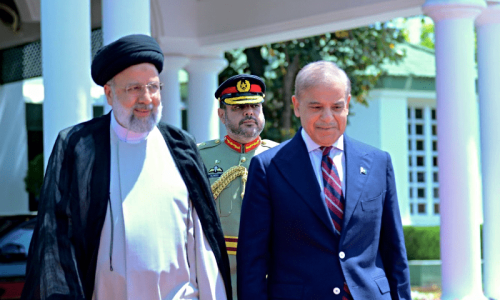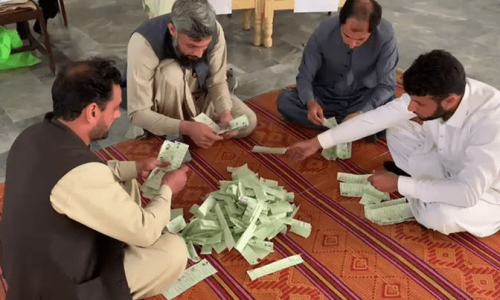BY-ELECTION results should not be over-analysed. With low turnouts and given that these are typically low-stake contests, by-elections often produce outcomes that are a poor guide to what happens in a general election. So why worry about NA-120? Well because it is no ordinary by-election!
It is not ordinary because it has come on the heels of Mr Sharif’s disqualification. It is a direct consequence of the constitutional case pursued single-mindedly by PTI that resulted in his disqualification.
It is our first opportunity to assess whether a significant proportion of the electorate in PML-N’s heartland is incensed at the disqualification and is willing to use the vote to register protest. Or are the sands shifting because voters view the ruling family as a mafia that must be held accountable?
NA-120 has already proved to be susceptible to PTI inroads, even without Panama, which makes it an ideal constituency for observing which direction the wind is blowing in. PTI’s Dr Yasmin Rashid was able to erode PML-N’s substantial 2008 victory margin by 17 per cent in 2013, in a direct contest with Mr Sharif. This was almost three times larger than the reduction in PML-N’s margin of 6pc in Lahore district overall. Hence, there is no reason to believe that PML-N is unlikely to face a fight if PTI’s message is resonating with voters.
The NA-120 by-election is by no means an ordinary poll.
How do we infer the direction of the wind from the result? PML-N claims that voters are incensed at the establishment for usurping the power of their vote and dismissing their prime minister — their guarantor of development. The two gauges of whether this claim holds will be high turnout and PML-N maintaining its 2013 victory margin of 26pc. An increase in this margin should really worry PTI as it will show the limits of a campaign built solely around Panama.
However, a fall in the PML-N victory margin below 10pc to 15pc and a lackadaisical turnout should worry the ruling party. This would indicate the possibility of a growing constituency for the accountability of the Sharif family. This would also give rise to fears that central Punjabis may turn their backs on PML-N because they see the judgement as a sign of waning political authority. This is the infamous dismissal effect that has been empirically established for Punjab in the 1990s, where the ruling party dismissed through the Eighth Amendment was penalised in the subsequent election. At a minimum, such a result would embroil the party as it chooses its leader for 2018.
The result will also reveal PTI’s ability to take the fight to areas where PML-N’s local organisation is entrenched, which has implications beyond the by-election. NA-120 contains two provincial assembly constituencies: PP-139 and PP-140. In 2013, Dr Rashid’s main gains were concentrated in PP-140, where PML-N replaced their MPA who had won the 2002 and 2008 elections with a new candidate in 2013. PP-139, on the other hand, has an experienced and entrenched local organisation that goes back decades and it is here that she failed to make inroads.
Our analysis shows that in 2013 around 19pc of PP-140’s polling stations were closely contested, where PTI either won or lost by a margin of less than 5pc. The equivalent figure for PP-139 is 5pc. We also find a much larger reduction in PML-N’s victory margin (18pc) in polling stations that were not closely contested in PP-140 compared to the fall (7pc) in similar stations in PP-139. To win 2018 PTI will have to demonstrate the ability to break into areas like PP-139 where PML-N is entrenched and the result will reveal their readiness to do so.
The result will also show whether PTI continues to resonate with women, an important group they were able to mobilise in the 2013 elections in NA-120. The general impression is that women mobilised in support of PTI beyond NA-120 as well. An analysis of 2013 polling station level returns for NA-120 show that women did, indeed, give an edge to PTI especially in closely contested stations. We find that PML-N’s victory margin was on average 6pc less in a woman’s station compared to the male station in the same closely contested polling station neighborhood. The NA-120 result will show whether PTI’s single issue campaign is able to galvanise women or is not resonating with them.
These signposts will influence important decisions such as holding early elections, the decision to deepen the PTI campaign around Panama and PML-N’s choice of leader for 2018. It will also tell us who is likely to inherit the wind in 2018!
Ali Cheema is a senior research fellow at IDEAS and an associate professor of economics at Lums.
Ahsan Tariq is a research assistant at IDEAS.
Published in Dawn, September 15th, 2017




